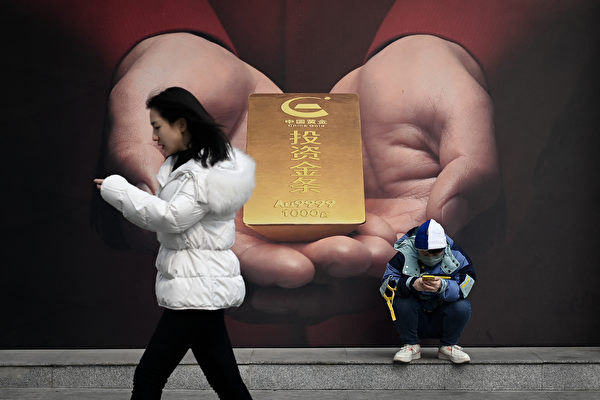In 2024, the price of gold has hit record highs. As of August, the People’s Bank of China has not increased its gold reserves for the fourth consecutive month.
Throughout this year, with bets on the upcoming interest rate cuts in the United States, as well as geopolitical and economic uncertainties driving demand for safe-haven assets, central banks around the world have been vigorously buying gold, leading to a continuous rise in the price of gold.
On August 16th, the international spot gold price broke through $2500 per ounce for the first time in history. On August 20th, the spot gold price reached another record high, surpassing $2520 per ounce. Statistics show that the international gold price has risen by over 20% since the beginning of the year, with more than 20 new highs reached during the year.
According to official data released by the Chinese Communist Party on Saturday, as of the end of August, the People’s Bank of China maintained its gold holdings at 72.8 million troy ounces. In contrast, from April this year, the People’s Bank of China had been increasing its gold reserves for 18 consecutive months.
Carsten Menke, an analyst at Julius Baer Bank, told Reuters that despite the high gold prices, it is expected that the People’s Bank of China will resume purchases at some point for political rather than economic reasons, such as reducing dependency on the US dollar as a reserve asset.
In 2023, the People’s Bank of China was the world’s largest single buyer of gold, and its decision to pause purchases helped curb the demand from Chinese investors in recent months.
Bloomberg reported that although the recent high gold prices have affected non-essential items like jewelry in China, gold bars and coins are becoming increasingly popular as investors seek to protect their wealth from economic slowdown.
Over the past two years, central banks have accounted for about a quarter of global gold demand, more than double the average of 11% in the previous five years. Emerging market central banks have been increasing their precious metal reserves for strategic reasons.
A report by BCA Research on September 6th showed that global central banks, especially those in emerging markets, continue to expand their gold reserves, and this trend is expected to persist, supporting the continued rise in gold prices.
According to Investing.com, the latest central bank gold reserve survey by the World Gold Council shows that 81% of central banks expect global gold reserves to increase in the next year, the highest proportion in the survey’s six-year history. 29% of central banks expect to increase their own gold reserves, indicating a strong willingness for further accumulation.
BCA Research predicts that by the end of 2024 or early 2025, there will be a global economic downturn, during which gold typically performs well. When economic activity is below trend levels, central banks often increase gold purchases as a precautionary measure.
In conclusion, despite recent volatility in the gold market, the long-term investment value of gold as a safe-haven asset cannot be ignored. Particularly against the backdrop of heightened geopolitical uncertainties, gold’s role as a “reserve currency” will continue to attract the attention of central banks and long-term investors.
On the other hand, with the collapse of the Chinese real estate industry beginning at the end of 2021, Chinese people have started to increase their purchases of gold. This might be due to capital controls, as Chinese investors have limited options for investment apart from the domestic stock market, real estate, and gold. So, when both the stock market and real estate market are in a slump, gold becomes even more appealing to people.

